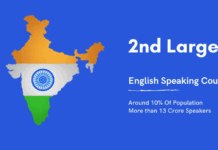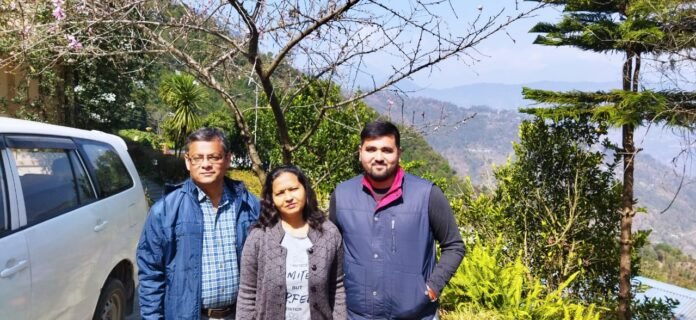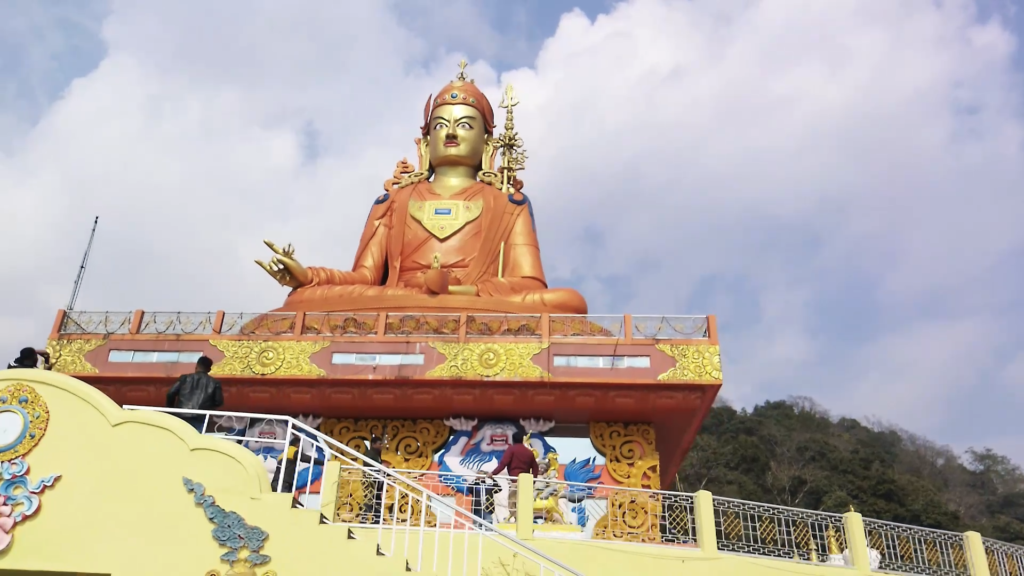Kanchenjungha: 2022
Kanchenjungha: 2022
Prelude
After retiring from Central Government service, I have enjoyed traveling from my home Chandannagar to various historical places in Hooghly district for the last few months. But I was a little bored just roaming around Hooghly district. So I thought, to leave the plane few days and rest myself in the lap of the majestic Kanchenjungha mountain.
Journey Begins
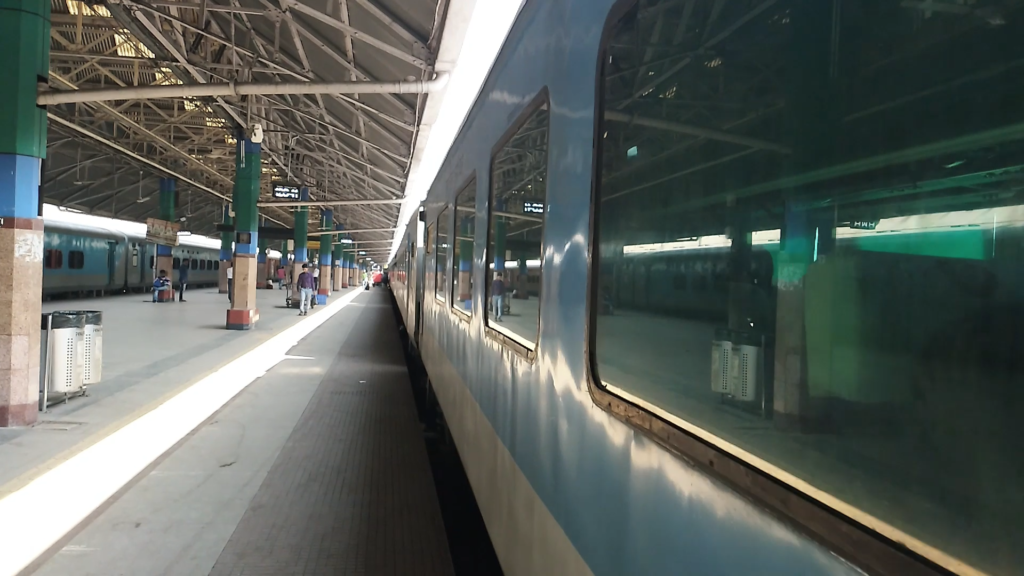
Then what am I waiting for? March means Spring has arrived. Is there any better season than Spring to visit the mountain? So on 4th March, we took Shatabdi Express from Howrah to set off our six-day tour program. Our journey’s destination was offbeat places in the mountain range of Kanchenjungha. And they were Ravangla, Kaluk, and Hee Patal-Chayatal.
My wife Sukla and son Saikat were with me.
Nowadays, Saikat has a new hobby to make travel blogs. He is an upcoming travel blogger. You can see his travel vlog on YouTube under the name Saikat Ghosh.
Saikat took his laptop and all the equipment with him for the vlog. He intended to release the vlog on YouTube instantly after visiting the spot. But the question was whether the internet facility would be available in the remote hill station. Well, he started blogging from Howrah station itself. Well, let’s see what happens next.
Gateway to Kanchenjungha: NJP
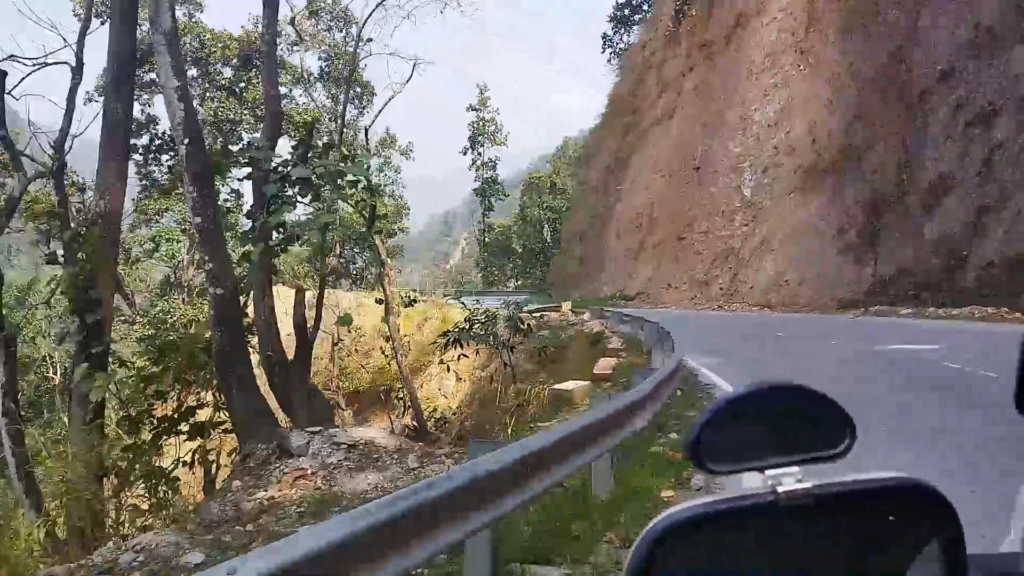
We reached New Jalpaiguri (NJP) station at around ten-thirty night. We passed the night in a hotel named Radha Rani lodge near the station. For a day-night stay, it charges Rs 1000. For a transit stay, I recommend this hotel. The location is hardly one kilometer from the station. The owner, Mr. Vikram Roy, and Mr. Pradip Roy behave nicely with you and take care (contact Number 9933998807, 9733337777, Website:www.radharanilodge.com).
Kanchenjungha calling : Story of journery to hill station.


Our tour program was pre-determined. The Pelling-based Enroute Travel Company parked the seven-seater Xylo at seven in the morning. An eighteen-year-old Nepali teenager driver Dorji looked cheerful. His face had an innocent look. And to be honest, I like a humorous driver in a hilly way. Dorji said that he went to Pemayangtse Monastery to become a Buddhist monk. But he could not cope with the hard life one has to face to become a monk. Moreover, he had homesickness. So he left the Monastery and learned to drive.
You all are aware of the meandering hilly path. So the driver has to be cautious all time. Dorji was pretty good at driving on a snaky hilly route. He has a habit while driving. He would keep asking you, “Sir, am I not driving fine” his face beamed with innocence as he asked me. I was consuming his innocence. “I have come so many times in hill. But Dorjee, all other drivers fade away compared to you”, said I. And it made him pleased.
Well, we headed for Ravangla via Namchi. To go Rabangla, you have to proceed via Rangapur or Malli Bazar. We followed Mallibazar.
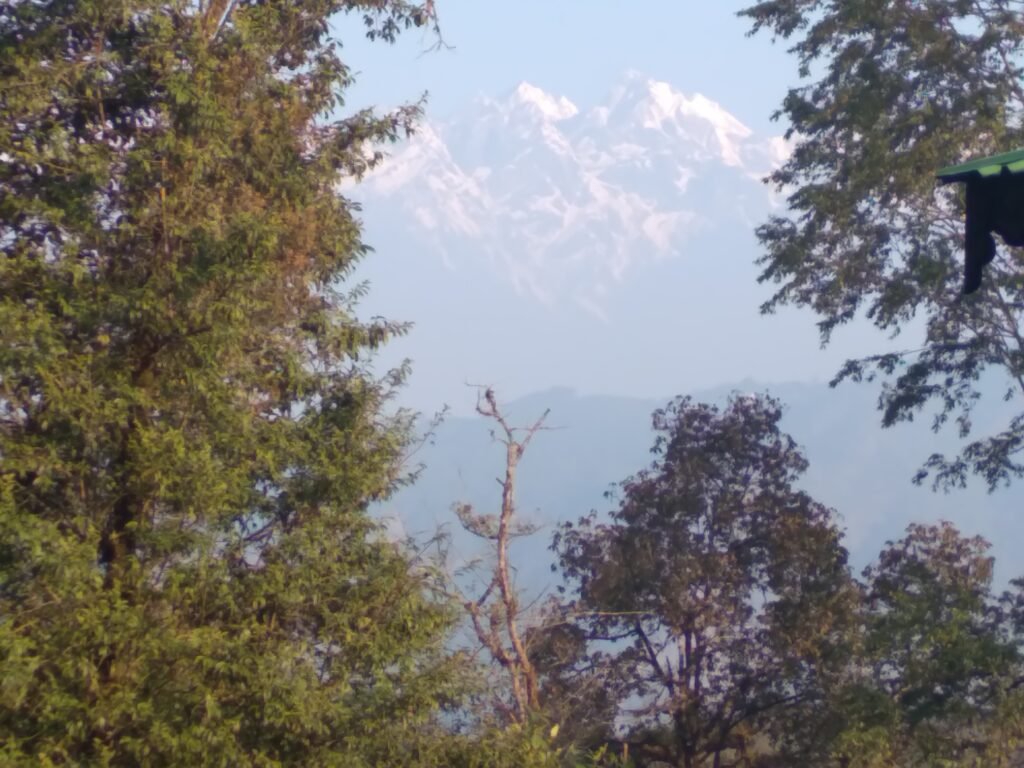
The scenic beauty was beyond words. Mountain on one side, moat on the other side, Sometimes the clouds were above us, sometimes we were above and the clouds below. Fauna and flora on the way kept us greeting as our vehicle moved up and down. When the sun rays fall on the snowy hill visible from afar, the view of the shining hill takes you to a spell of charm.
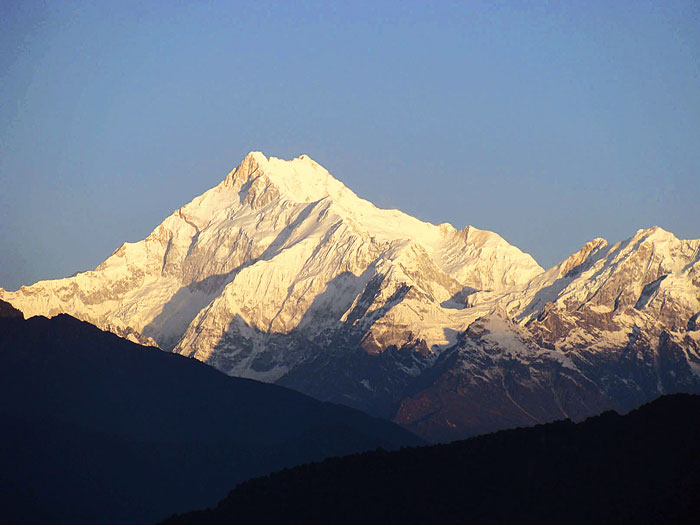
Kanchenjungha calling : Welcome to Namchi
Soon we entered Namchi. Namchi falls in the Southern part of Sikkim at 5500 feet and is 90 KM away from NJP. Namchi is more known for focussing on Sikkim’s cultural and religious values.
Tourist Spots
i) Bhaichung Stadium
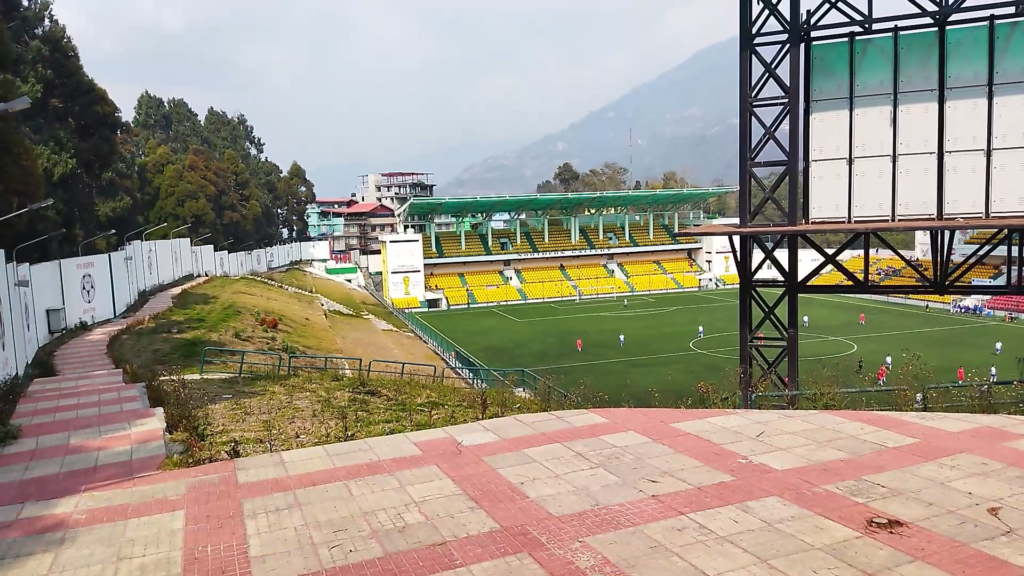
One of the town’s highlights is the football stadium—the Bhaichung stadium built by the Sikkimese government in honor of famous footballer Bhaichung Bhatia. The stadium holds a popular Gold Cup football tournament every year in which teams from Nepal, Bhutan, Bangladesh takes part. Our first stoppage was unexpectedly the football stadium. Before leaving the house, I did a little research about the place I would visit here. That’s when I came to know about the football stadium. Although this stadium was not in our schedule, I asked Dorji to stop the car when I saw it on the way.
A local football match was going on when we stopped there. But spectators were not allowed in the stadium. So we could not make the head and tail of the game as we watched the match from a distance. To be more precise, we had a panoramic view. You also could make it out by watching the video at the end of the story.
ii) Namchi Char Dham
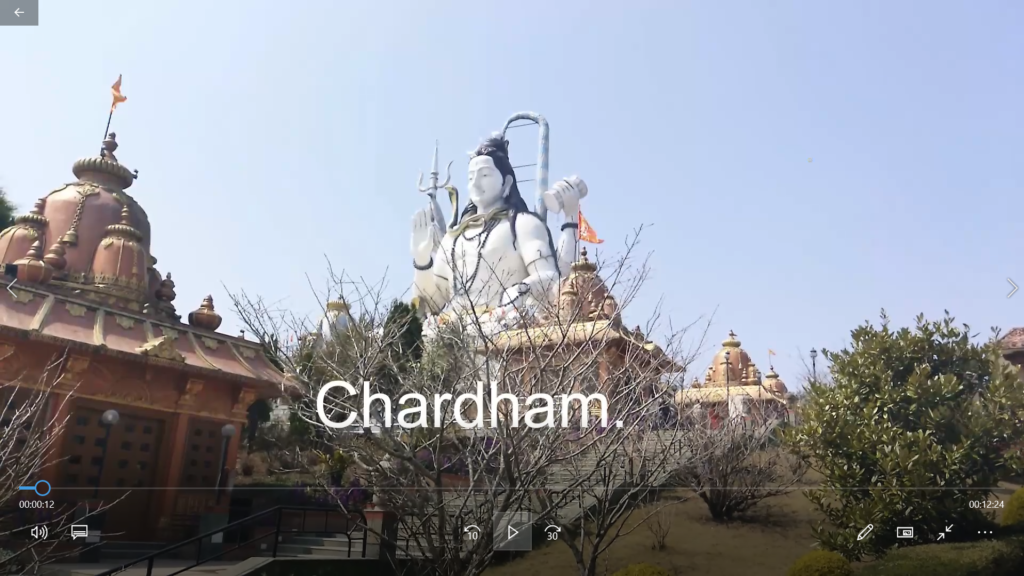
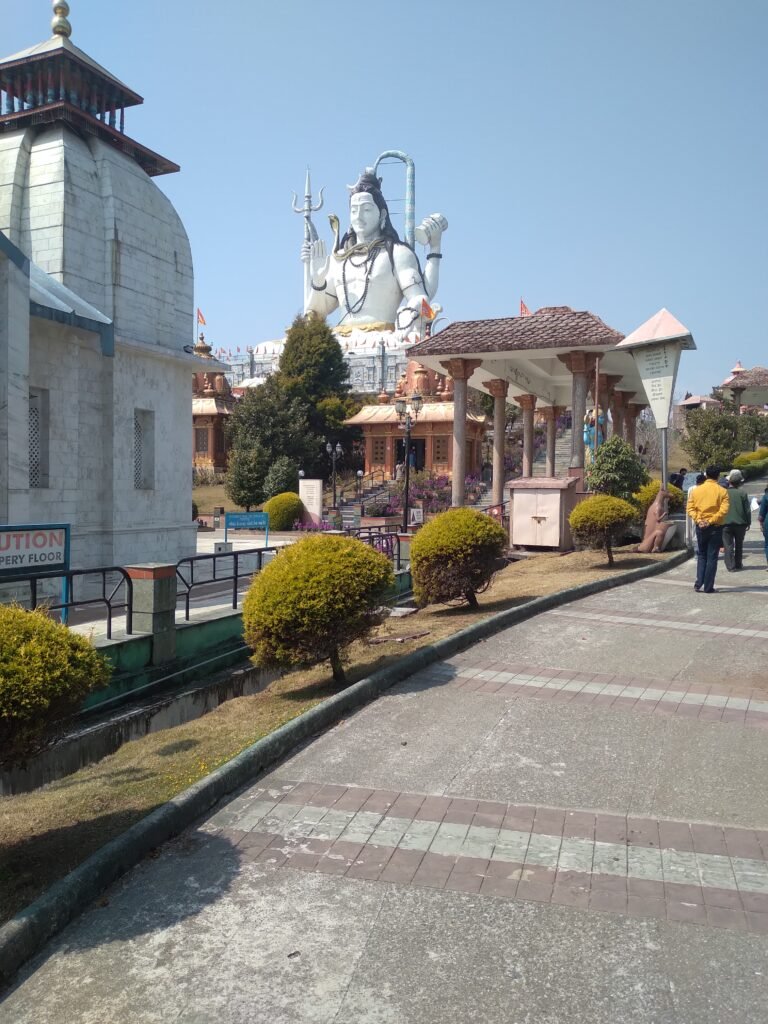
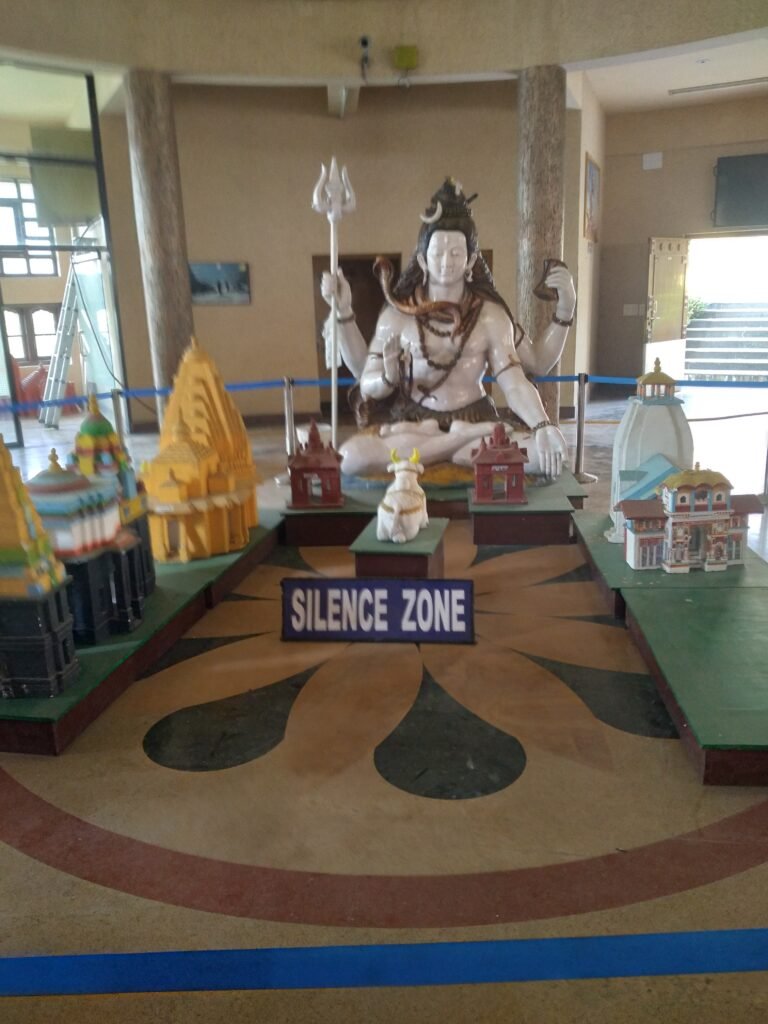
Namchi Char Dham was our next halt. Shankaracharya had built Char Dham to maintain the Hindu religion. Dwarka in the west, Puri in the east, Rameswar in the South, and Badrinath in the East. Every Hindu wishes to have darshan of these dhams in their lifetime. Namchi Char Dham is a replica of our Char Dham. It is located over a massive acre of 7 acres of land on top of solophok hills. In the center of all is a towering 87 ft statue of Shiva placed on a 108 ft high temple with a mural depicting his story. Around the temple are replicas of the 12 Jyotirlinga and a statue of Kirateswar, a hunter incarnation of Shiva.
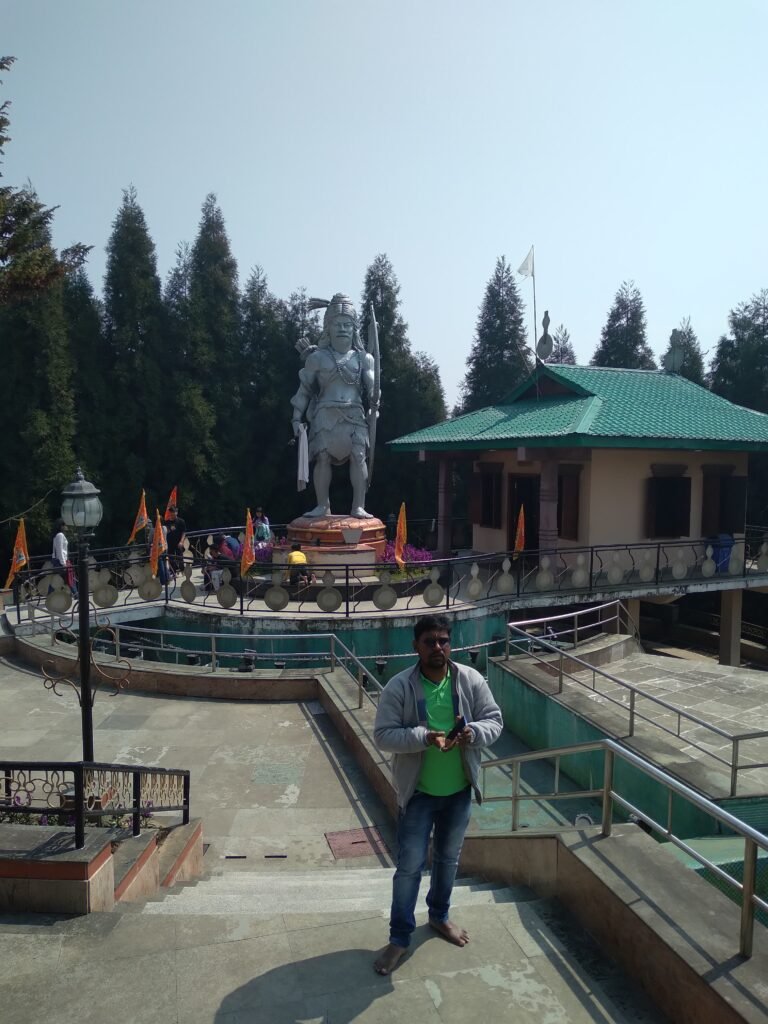
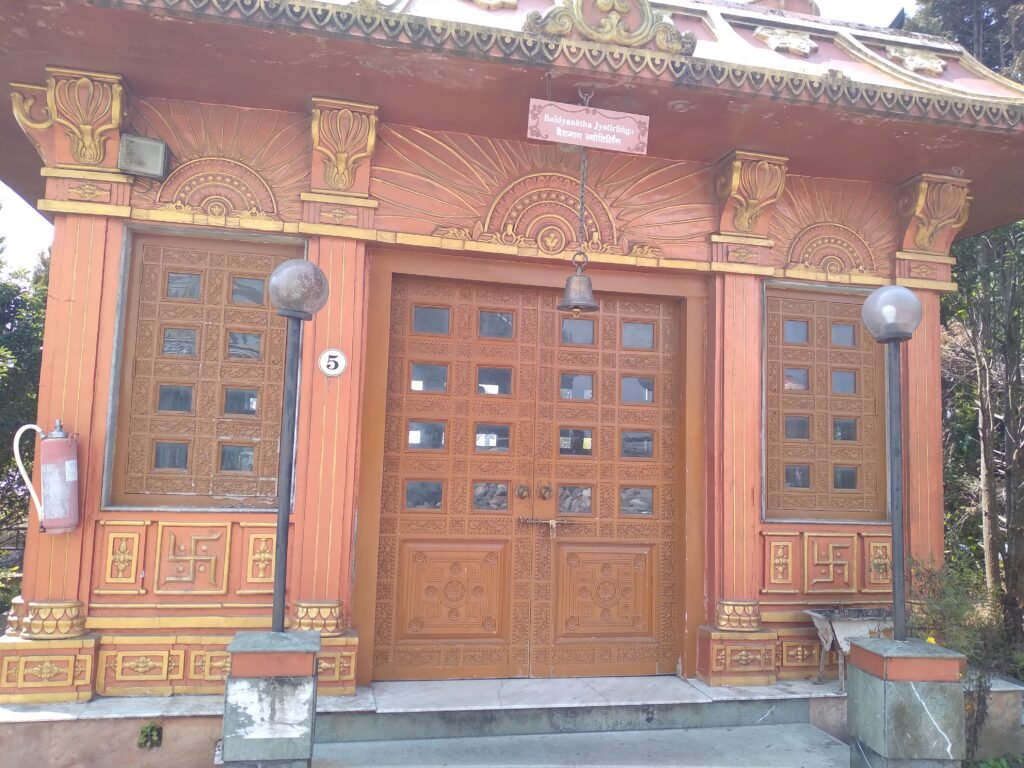
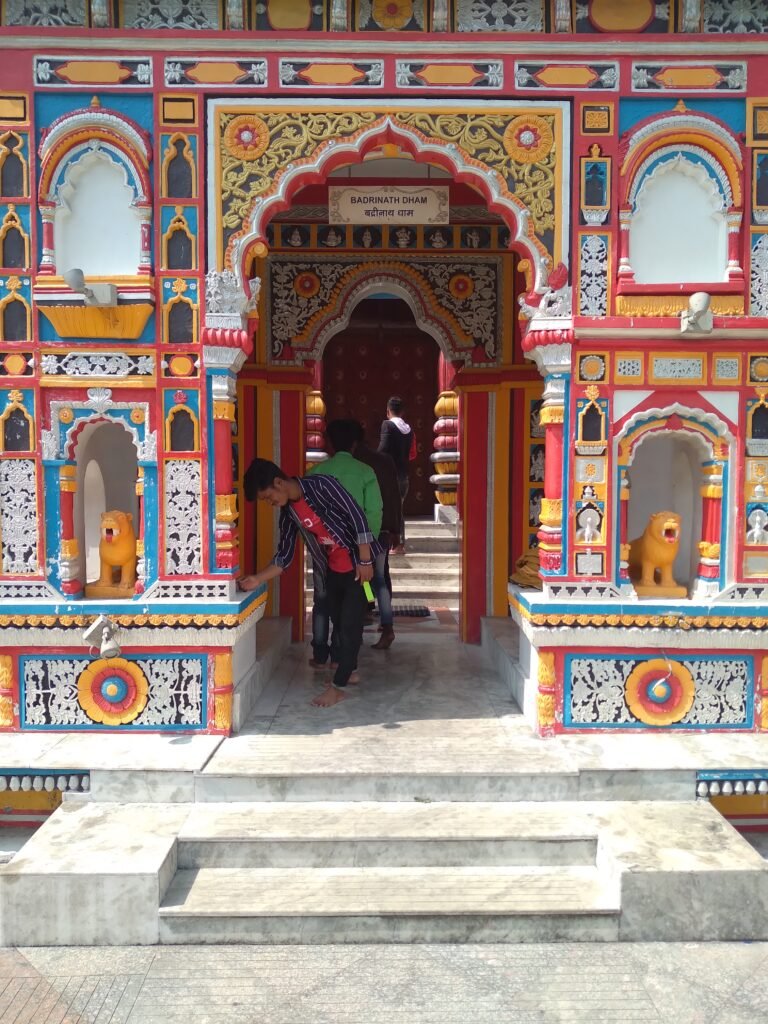
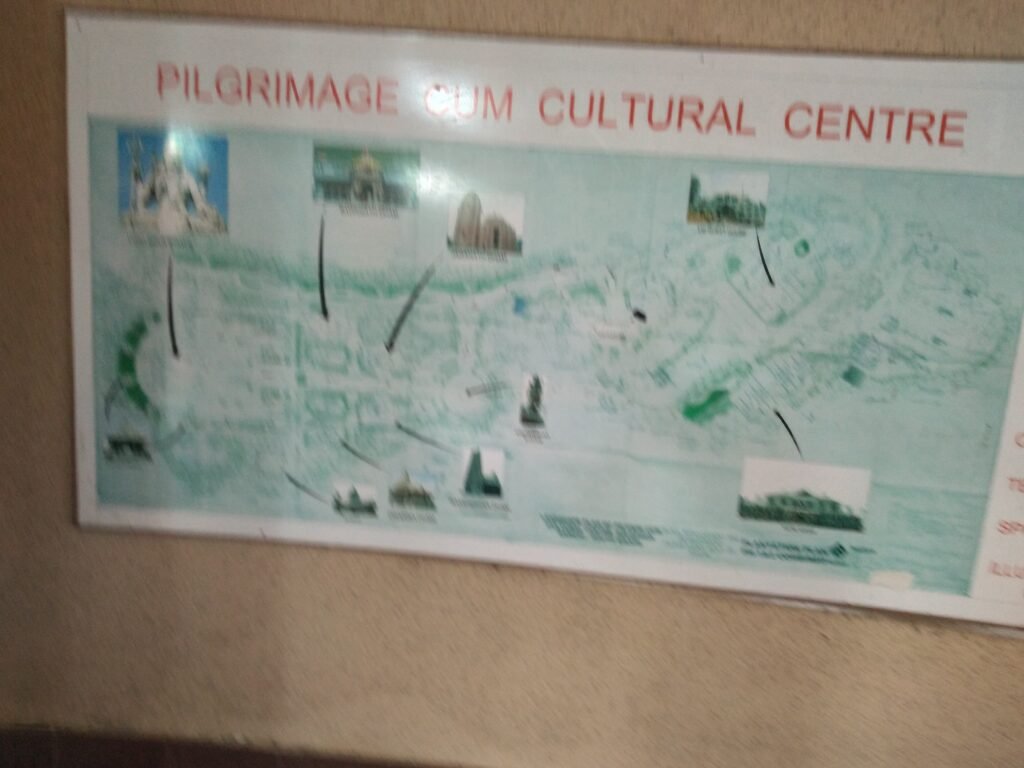
The colossal statue of Lord Shiva takes the shape of the temple’s peak. Beneath this massive Shiva idol is the main temple. You cannot do photography or video inside the temple. Inside the temple, the wall has a display from “Shivapuran.” Shivapuran is a religious text of Hindus. I don’t know much about ‘Shivapuran’ to tell you. All I know is that Lord Shiva features in Shivapuran. Cosmology, mythology, devotion, relations between Gods mention in Shivapuran.
iii) Shirdi Sai Mandir
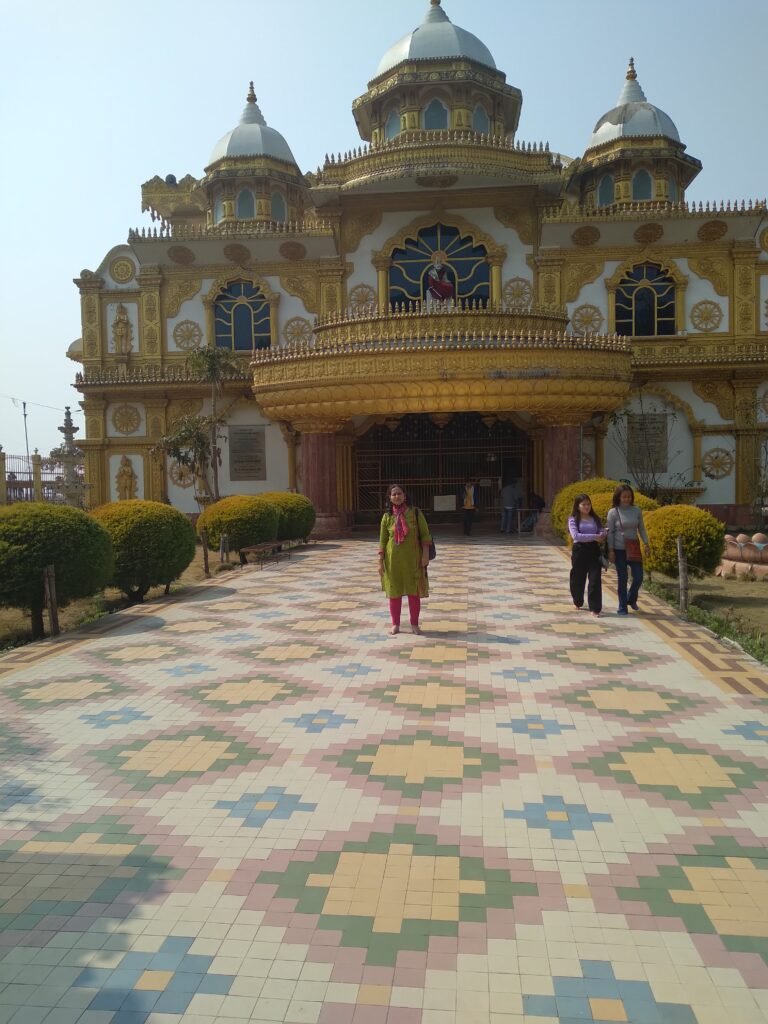
A marble statue of Shirdi Saibaba seated on an elevated platform takes center stage. The mural depicts Saibaba’s life and also showcase Vishnu in different carnation. In addition, the temple has a garden where you can even get a panoramic view of Mount Kanchenjungha.
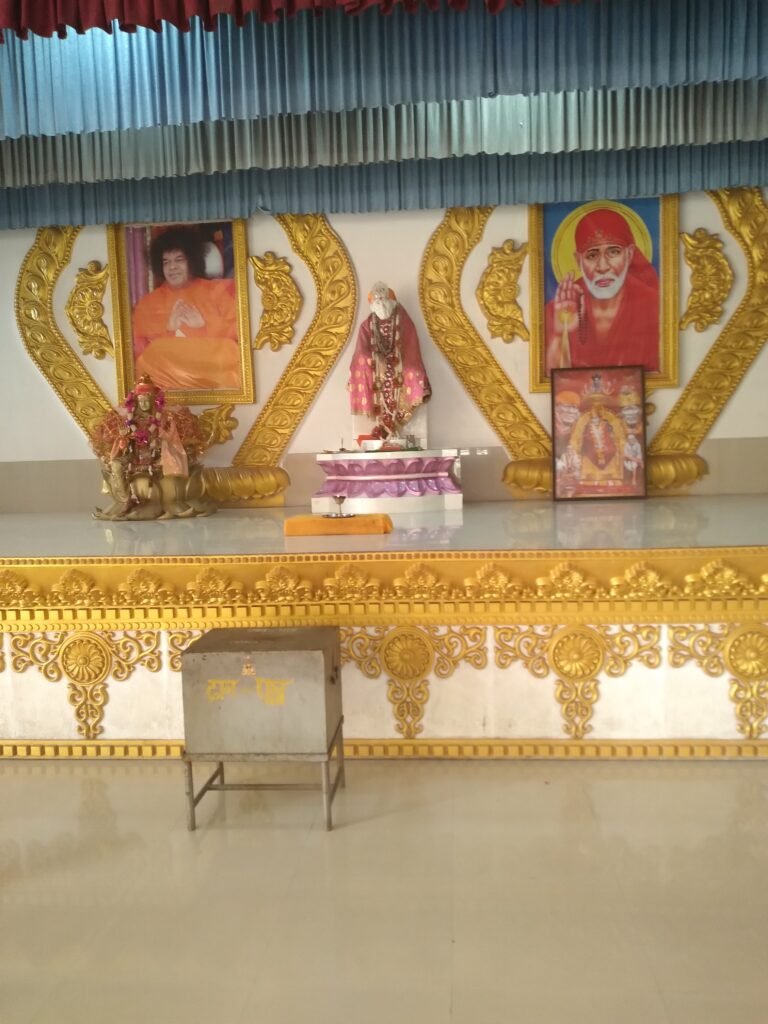
I found one thing extraordinary about the Saibaba temple here. The name of the temple is Shirdi Sai Mandir. But the idol of both Sai Baba and Satya Saibaba is present in the prayer room on the ground floor. But the first floor has an idol of only Shirdi Sai Baba.
When I wanted to know about his viewpoint, a gentleman named DK Pradhan, working in the temple, said that the Prayer hall on the ground floor is for bhajan and kirtan. “Anyone can come from anywhere and do bhajan here. They could either be a follower of Shirdi Sai Baba or Satya Sai baba. But on the first floor, only the Arti of Maharashtra-based Shirdi Sai baba temple is only played in the Marathi language,” Pradhan said. Then, recalling his experience, he said that the visitors of Maharashtra and Madhya Pradesh believed in Shirdi Saibaba only.
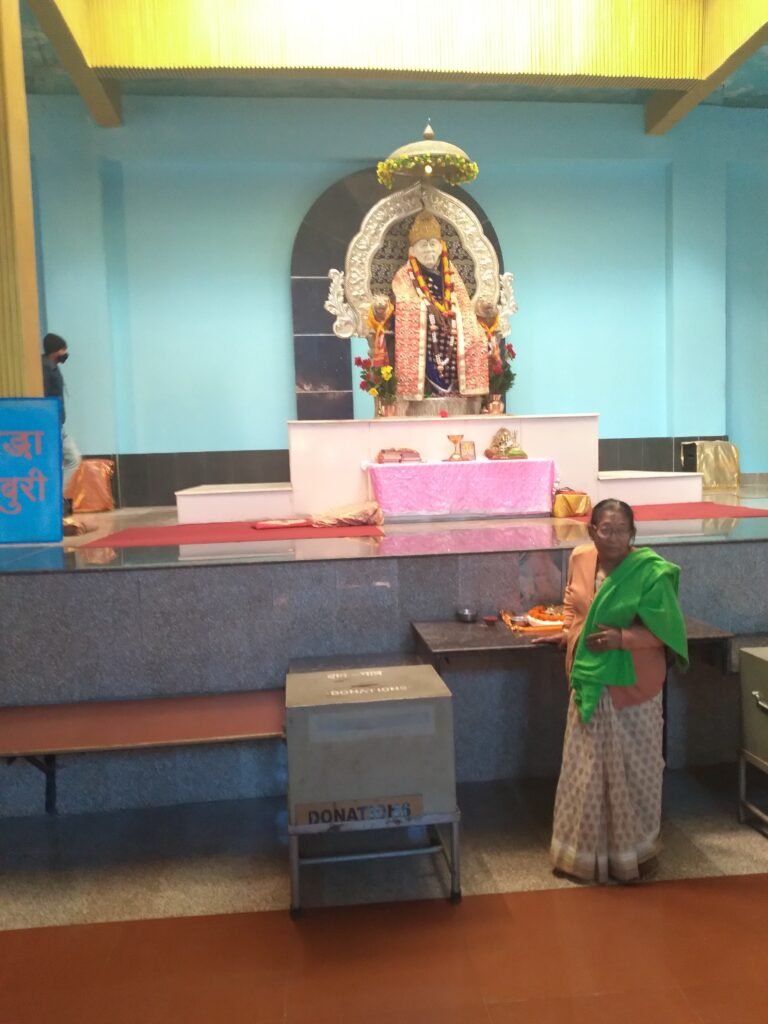
iii) Guru Padmasambhava Samdruptse.
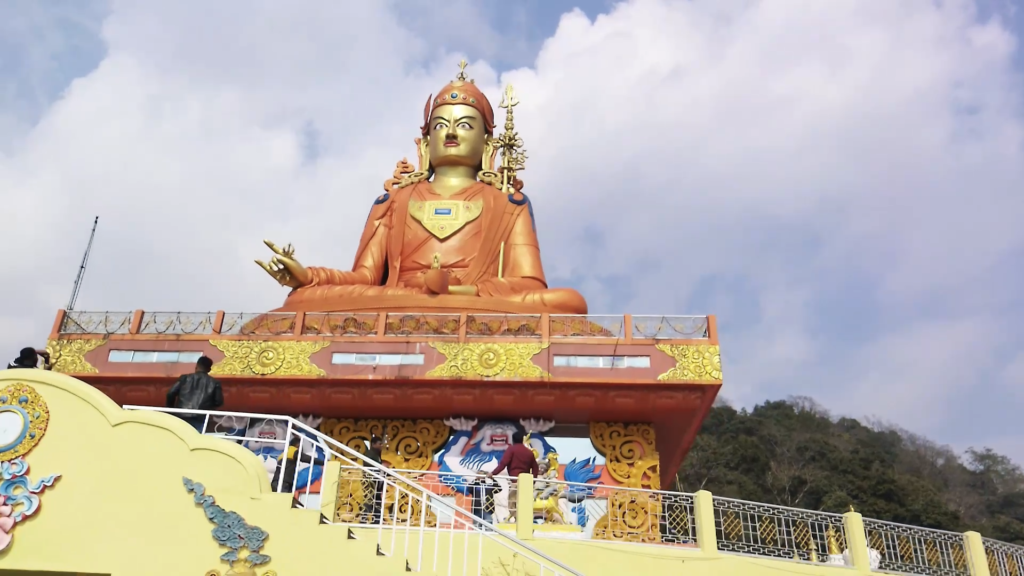
An impressive 135ft high statue of Padmasambhava painted in copper and gold seats on a lotus plinth. Situated at 7000 ft on Samdruptse hill, the Monastery is most revered in Namchi. Dalai Lamba laid down the foundation stone in 1997.
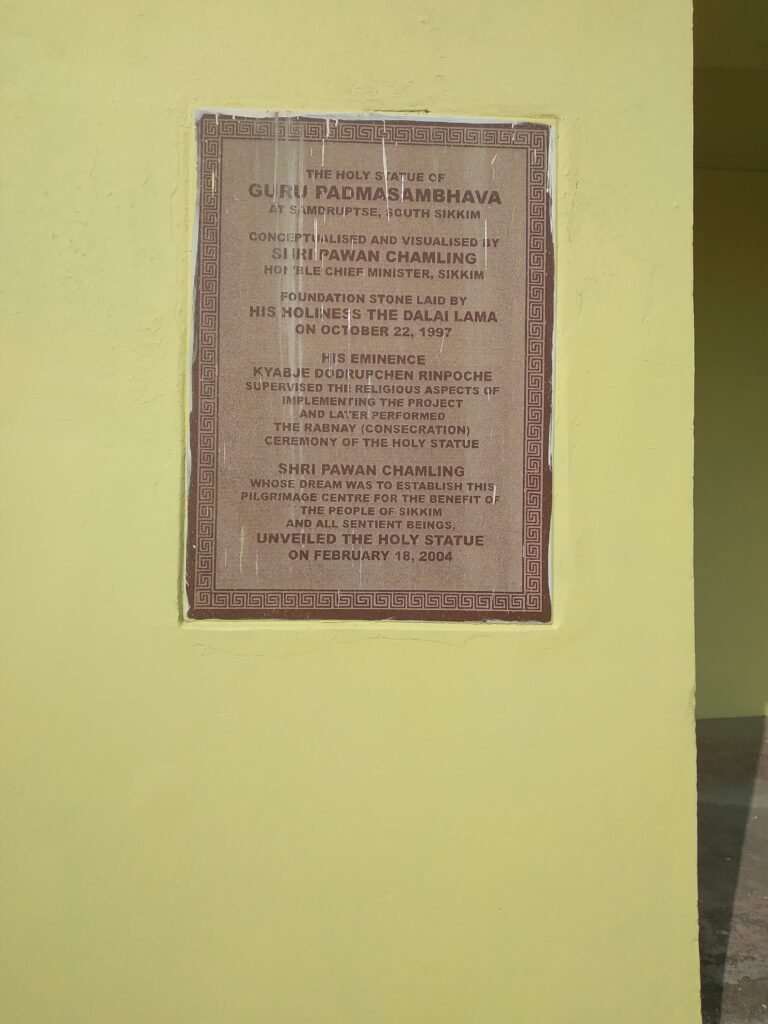
Also known as Guru Rinpoche, Padmasambhava has blessed Sikkim for over 1200 years. He is a founding father of Tibetan Buddhism. Buddhism believed that Guru Padmasambhava was an incarnation of Lord Buddha.
Since this Monastery is on top of a mountain, you will have to climb up. There is a cement road to go up. While going top, you will see a colorful flag of Buddhism called Loongar.
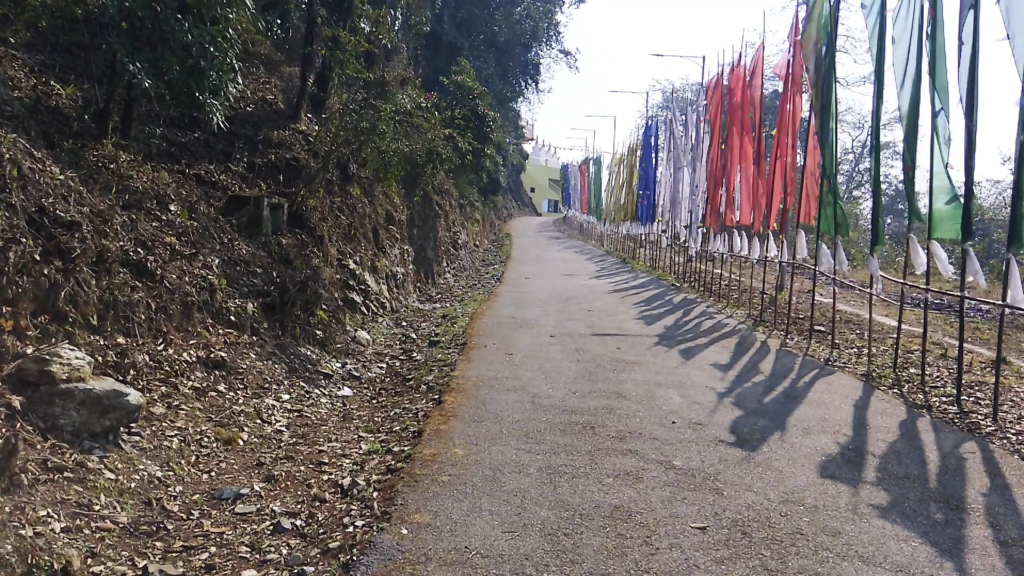
You might have seen colored clothe (Loongar) suspended on pilar or string whenever you go to a monastery. In my subsequent visit to New Ralang Monastery, Monk Gumi said that Loongar carries the Buddha mantra. So when the Loongar swayed in the air, people’s pains mingled, and it lost, according to belief in Buddhism.
So, I reached the top. The cold wind, the bright sun, and the snowy Kanchenjungha was brightening up in sun rays—-how overall I was mesmerized. I can’t describe it in words.
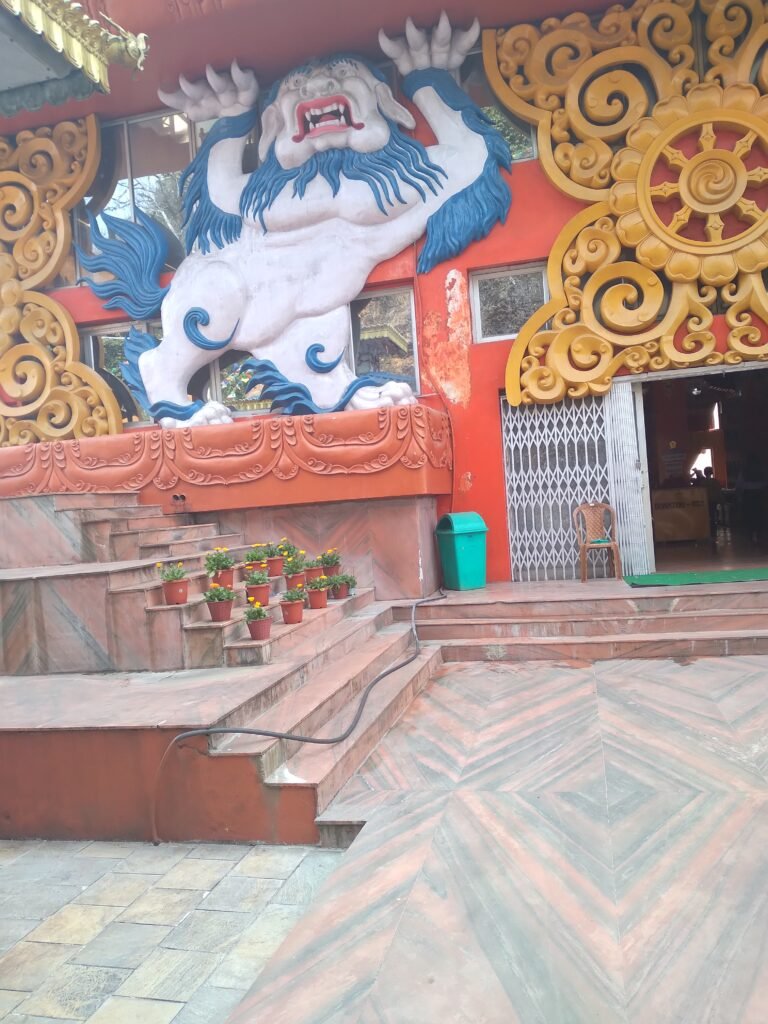
You could also appreciate the stone carving of Buddha Bhairavi and Astha Dhatu (Eight spokes) on the Monastery’s outer walls. Besides, there are replicas of the enlightenment stupa of Boudha that encircles the Monastery.
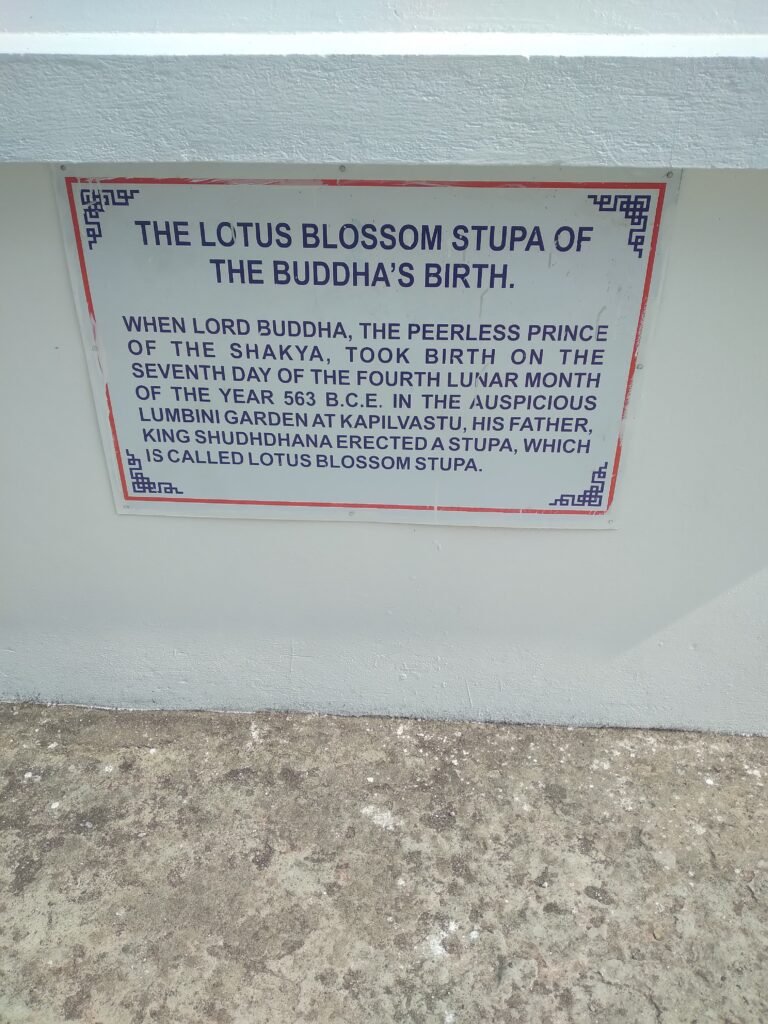

A monk in the Monastery explained to me the murals and stone carving figures on Monastery’s wall said that Asta Dhatu has eight spokes. “It symbolizes the eight paths of virtues of Buddhism. They are right deeds, thinking, living, meditation, and the right word. It is similar to ‘OM’ in Hinduism. But Boudh Bhairabi protects Buddhism and Boudh monks”, said the monk.
When I carefully saw the massive idol of golden color Guru Padmasambhava sitting on a lotus flower, my curiosity questioned me why lotus! “The lotus symbolizes peace and purity, and Buddhism stood for it,” said the monk, resolving my interest.
When I asked the Buddhist monk his name in the end, he said Boudha Bhikshu. I found his reply very strange. Every Boudha Bhikshu has a name. So I asked him not once but two or three times, but the same answer. Maybe there is some custom of Buddhism which I do not know. Perhaps readers may know.
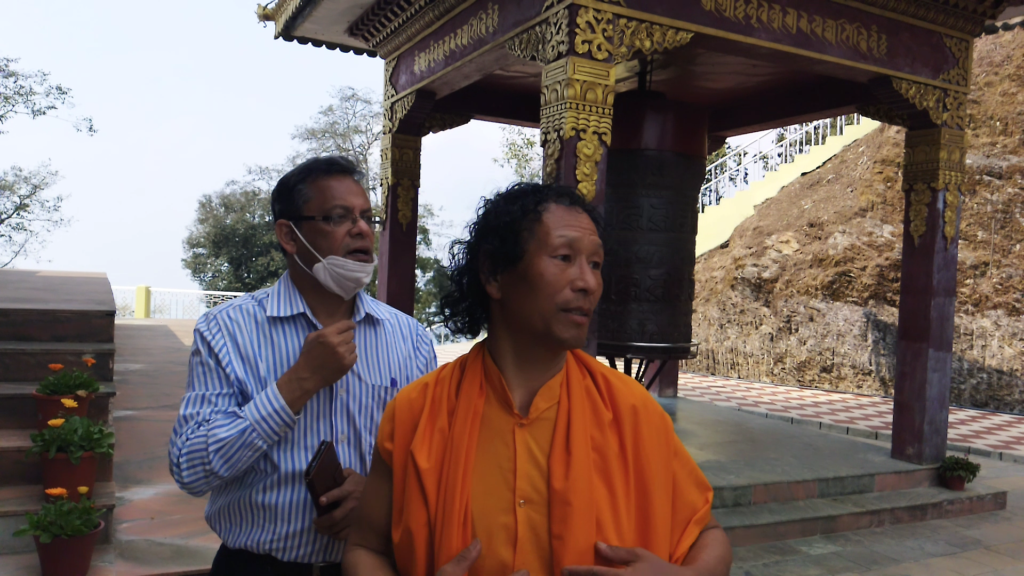
v) Temi tea garden
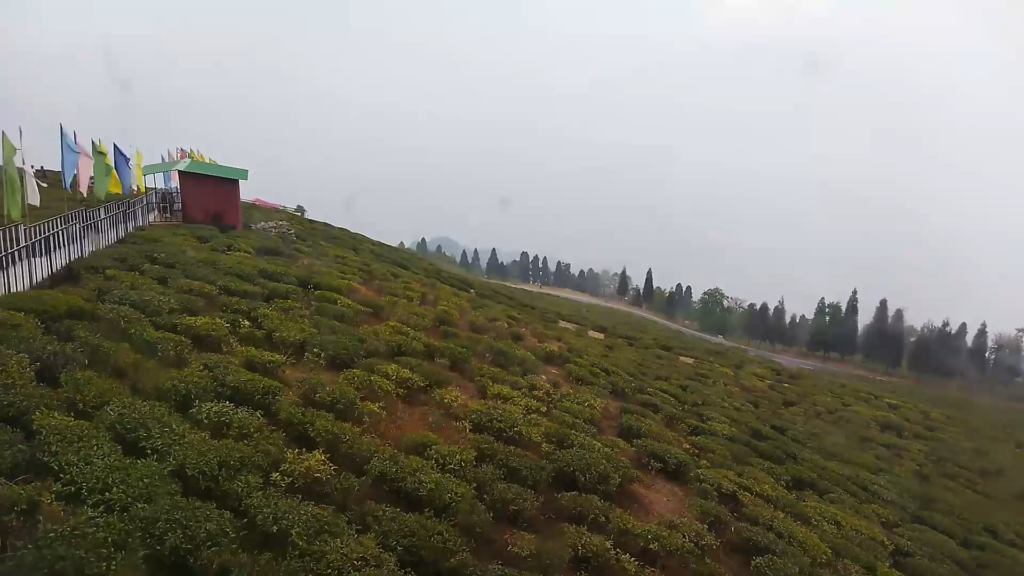
It was the last destination of our opening day of visit. Here from the tea garden, we had an enchanting view of Kanchenjungha.
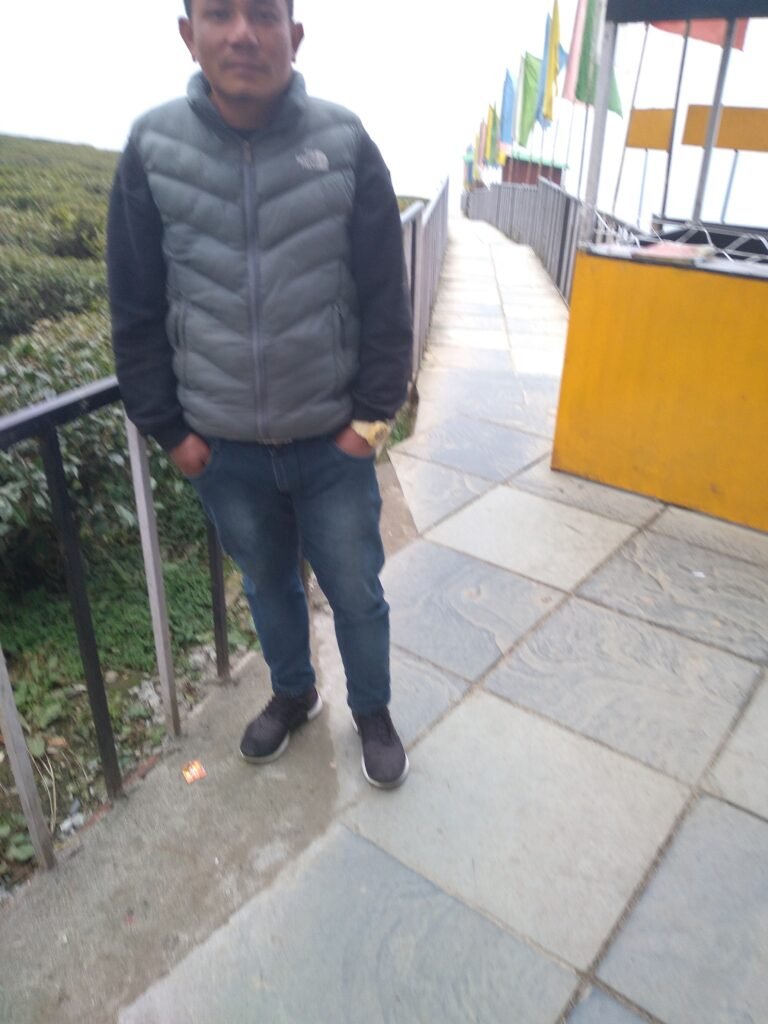
The Temi tea garden spreads over 500 hectares of land with seventeen blocks. Sikkim Government runs the Tea garden. Mr. Chaman, an official of the tea garden, said that plucking of tea leaves would start from April with the arrival of Monsoon. “By April, tea leaf will attain maturity. Our factory located beside tea garden process the tea leaf for end product”. Chaman said.
After this, we proceeded to Barfung resort, Ravangla, for our 5th and 6th March stay. Son Saikat edited a video summing up the opening day of the Sikkim visit. Luckily the internet was working. And so he uploaded the day one tour of Southern Sikkim on his Youtube channel.
The next few days we visited Rabangla, Kaluk and Heepatal/Chaya Tal. But these stories I keep reserved for some other days. I love to share the remaining part of Sikkim’s visit stories with my readers in a phased and relaxed manner.































